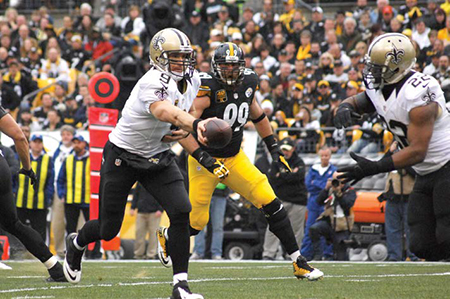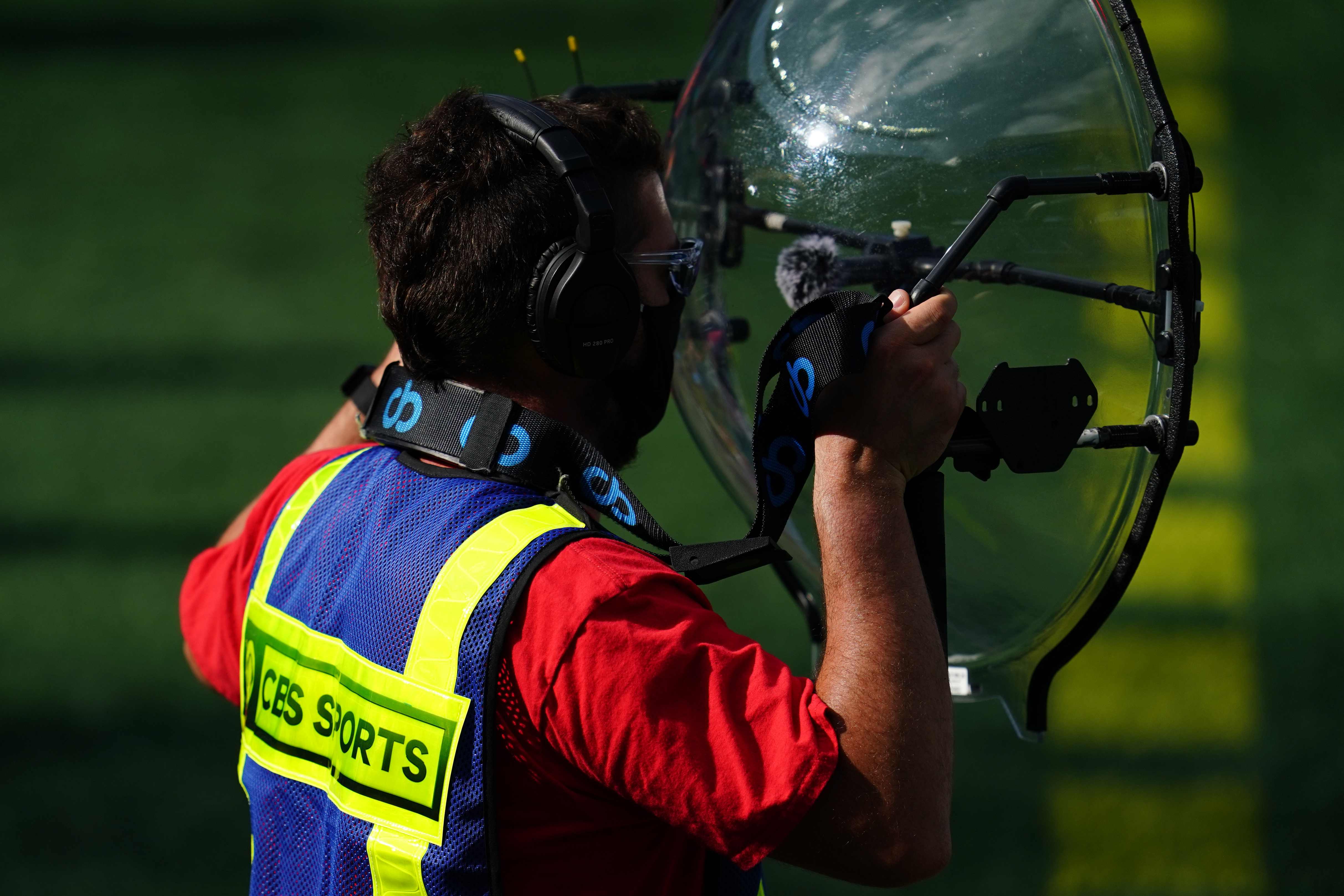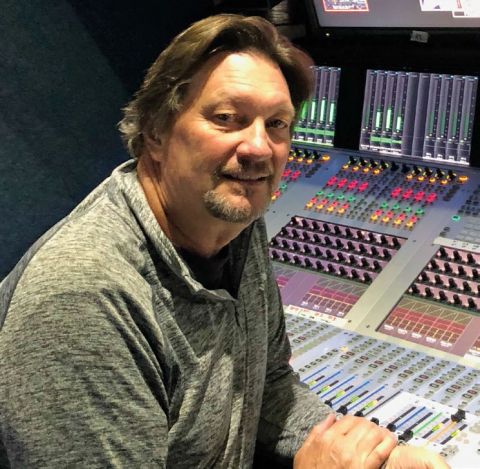Why Does Football Sound Different Across TV Networks?
A number of variables and guidelines create the differences in NFL audio

After months of listening to games of American football, I once again wonder why audio sounds differently across the networks—CBS, Fox, NBC and ESPN/ABC—for basically the same event. There seem to be several noteworthy variables that significantly shape the sound of a telecast including the venue, the broadcaster/network and finally a sound mixer’s tone, processing and mixing style.
Stadium Sound
When football first went on the air there were no indoor stadiums and they played in the rain, snow and occasionally in sunny conditions on grass. Audio coverage was mono and basic with various parabolic receptor designs, but the sound was adequate for the moment. My sound impression memory is that there is a sound to a snow-covered icy stadium with hard surfaces, a crispness that carries the sound. But broadcast sound changed with the addition of roofs, artificial surfaces and PA craziness.

A little physics tells us that an “open stadium” lets the sound/noise escape from a confined space. Sound energy builds and the cumulative effect is destructive to a clean capture for television purposes.
Jonathan Freed, mixer for ESPN/ABC, stated the obvious: “Open air stadiums sound different because the PA and crowd don’t echo off the roof and walls when there aren’t any.”
Additionally, Freed has presented his theories about “air inversions” for years. “In a really cold outdoor stadium the warm crowd and heaters by the team benches cause a layer of warmer air to rise and when it gets to a certain height it collides with the colder air forming an atmospheric inversion layer over the stadium. Sound from the field of play will actually reflect off of this layer back towards the sidelines and in some cases create a noticeably fuller sound for the parabs to pick up.”

The venue acoustics clearly are a factor, but Fred Aldous of Fox Sports told me that “the PA systems have gotten bigger and louder, and, significantly, the PA usage has crept into play action," Aldous said, “Music is being played over kickoffs and at the end of play, which interferes with useable field of play sound.” To make things worse, several years ago Atlanta was fined for pumping crowd sound back through the PA.
Acoustics impact the tone of the sound that the microphones capture, but the mixers control the balance of the sound elements—announcer, effects, crowd and music. With most major sporting events there is a significant effort to capture the sound from the field of play. Microphones and their placement are not a secret and there is fair consistency across the different mixers and networks particularly today, but clearly this did not happen by accident.
The professional video industry's #1 source for news, trends and product and tech information. Sign up below.
"Acoustics impact the tone of the sound that the microphones capture, but the mixers control the balance of the sound elements.
My sound observation is that Fox Sports mixes in more field presence. David Hill was chairman of Fox Sports for almost two decades and was instrumental in advancing the sound of football with his persuasion of the NFL to allow wireless microphones, first, on officials, and later, on players
Sound Variables
Even though football has had a powerful advocate with Hill, the NFL still controls where and when microphones can be placed and opened.
For example the NFL does not permit microphones near the benches and regulates the use of the microphone on the sky cam and even controls opening the player microphones before the networks receive a feed. The sound obstacles and variables
are well entrenched in the Sunday sound and there are guidelines, but there are differences in NFL crews. I have been told that some NFL sound personnel are better than others.
Of the number of games telecast on a Sunday afternoon, it seems that there would be a desire for a network to have consistency between the multiple games that are broadcast. Phil Adler, who did audio mixing for CBS Sports for more than two decades, told me that the network only has a mandate that the announcers’ volume level be between 4 and 6 dB louder than the field sound, but everything else is subjective to the mixer.

Aldous believes that Fox’s consistency endures because of weekly phone meetings, adding that while the meetings are not mandated, they do offer a forum to share ideas, philosophies and give “ownership” to the mixers.
Given that the sound variables, which include microphones, venue characteristics and technical facilities are somewhat equal, then the real difference is that the sound is the artistic and subjective interpretation of a sound mixer. You can not underestimate the range of subjective interpretation of a single sport from a group of audio practitioners that bring the consumer 16 consecutive Sundays of NFL football.
Experience Counts
As with everything in life, experience is the difference. It is hard to understand how unpredictable live sports can be, and how much of a challenge it is for the mixer to control, manage and tame the sound.
An inexperienced mixer tends to use too much compression to control the wide swings in the sound. Under compression/limiting can lead to the sound distorting through the signal chain while over-compression can be equally unpleasant with the audio pumping up and down.
An inexperienced mixer may not understand why the transmission signal flow was problematic when the networks went from mono to stereo and then to surround. What about immersive? Even though there is little talk of football in immersive sound, it is going to happen, and the learning curve will impact the sound of the show.
Finally, sound reproduction to the consumer is a moving target as well. Stereo, surround, immersive, soundbars, headphones, TV speakers—my head hurts. Sound has been equal parts evolution and innovation and maybe a little sound voodoo. What draws viewers’ attention to a game, even if they are half asleep? The sound! What can carry an entire show without pictures? The sound!
The audience can finally hear a difference and sound is a differentiating factor with broadcast brands. Some of my interviewees commented that some of the broadcast sound today is difficult to listen to.
Dennis Baxter has spent over 35 years in live broadcasting contributing to hundreds of live events including sound design for nine Olympic Games. He has earned multiple Emmy Awards and is the author of “A Practical Guide to Television Sound Engineering,” published in both English and Chinese. His current book about immersive sound practices and production will be available in 2022. He can be reached at dbaxter@dennisbaxtersound.com or at www.dennisbaxtersound.com.

